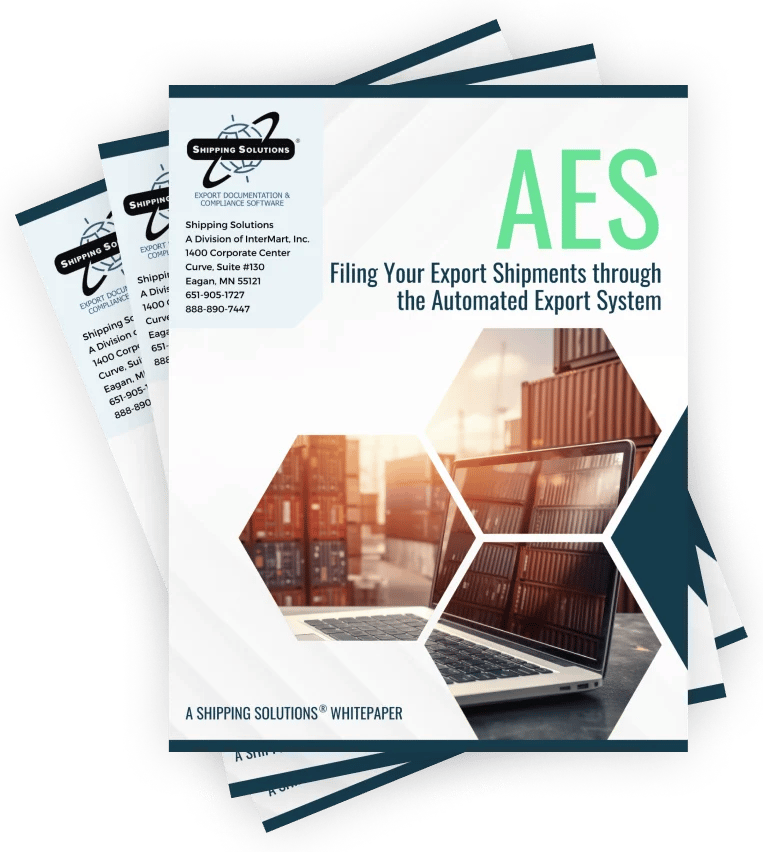The International Trade Blog Export Compliance
Standard vs. Routed Export Shipment: What's the Difference?
On: February 7, 2024 | By:  David Noah |
5 min. read
David Noah |
5 min. read
 I recently got a call from someone trying to gain a better understanding of the differences between standard and routed export shipments (also called routed export transactions) and how responsibilities change when dealing with routed export shipments.
I recently got a call from someone trying to gain a better understanding of the differences between standard and routed export shipments (also called routed export transactions) and how responsibilities change when dealing with routed export shipments.
Then, I got another call, and then an email or two, and so on—so perhaps you have these questions as well. Let me explain.
A Standard Export Shipment
According to the U.S. Census Bureau's International Trade Definitions, a standard export shipment is “all goods being sent from one U.S. Principal Party in Interest (USPPI) to one consignee located in a single country of destination on a single conveyance and on the same day.” The U.S. Foreign Trade Regulations (FTR) require that the Electronic Export Information (EEI) should be filed when the value of the goods in the export shipment is more than $2,500 per Schedule B or HTS commodity classification code.
A Routed Export Shipment
A routed export shipment is a specific shipment type that has unique (and often confusing rules). Here are the major differences and changes in responsibility exporters need to understand.
Who Arranges the Freight
In a routed export transaction, the forwarding agent, not the USPPI, is responsible for arranging freight. They are also responsible for providing the USPPI with documentation verifying that the information provided by the USPPI was accurately reported through the Automated Export System (AES).
In a routed export transaction, the Foreign Principal Party in Interest (FPPI), who is usually the foreign customer, purchases goods from the USPPI and authorizes a U.S. agent to facilitate the export of items from the United States on their behalf. The FPPI also authorizes the preparation and filing of the electronic export information (EEI) in one of two ways:
1. The FPPI can authorize the USPPI to file the EEI.
In order for the USPPI to file the EEI, the USPPI must get written authorization from the FPPI. With that authorization, the USPPI can ensure the EEI and related documentation associated with the routed export transaction are filed correctly.
With Shipping Solutions export documentation software, you can file through the Automated Export System (AES) while accurately preparing the other documentation up to five-times faster.
2. The FPPI can authorize their agent to prepare and file the EEI.
In this case, the USPPI must provide information to the U. S. agent regarding the shipment.
In the event that the freight forwarder or other agent will be completing and submitting the export information via AES on behalf of the FPPI, the duly authorized freight forwarder or other agent must obtain a power of attorney or other written authorization from the FPPI.
The USPPI must provide the following data to the authorized freight forwarder or other agent for the freight forwarder to file through AES:
- The name and address of the USPPI.
- The employer identification number or other tax identification number of the USPPI.
- The point of origin for the merchandise awaiting exportation.
- The appropriate merchandise code, Domestic (D) or Foreign (F).
- The appropriate Schedule B number.
- The appropriate Schedule B description of commodities.
- The appropriate quantity and unit of measure.
- The appropriate value.
- The appropriate export control classification number (ECCN) or enough technical information to determine the ECCN.
If you need to provide this information to a freight forwarder, you should do so using a shipper's letter of instruction (SLI) form that follows the template published by the National Customs Brokers and Forwarders Association of America (NCBFAA). Shipping Solutions export software makes it easy to create an SLI in NCBFAA format (along with more than two dozen other standard export forms), or you can download a free sample SLI form.
How Information Is Filed through AES
Even though the USPPI is not responsible for filing through AES in a routed export transaction, they can still negotiate that responsibility. For this to work, the USPPI needs to get a limited power of attorney or statement assigning them the duty from the FPPI. I highly recommend doing this.
Why would you want to do this?
Because in a routed export transaction, you are giving up at least partial control of one of the cornerstones of successful exporting—compliance. Your customer (who’s most likely not in the U.S.) probably does not understand or care about U.S. export regulations; in fact, it might even be in their best interest to ignore or avoid these regulations! However you, as the exporter, do not have that luxury—and ultimately, compliance is your responsibility.
Get a comprehensive look at why you should consider negotiating the responsibility to file through AES in a routed export transaction in my article, Why I Hate Routed Export Transactions.
If you as the USPPI are unable or unwilling to get authorization from the FPPI to file the EEI, you should take a few extra steps to ensure that the authorized agent filed the information correctly:
- Request a copy of the Internal Transaction Number (ITN) that the filer should have received from AES after completing the filing, as well as the name of the filer and the date of the filing.
- Run the Automated Commercial Environment (ACE) Report 203 to see a list of all the AES filings submitted using the USPPI's tax identification number and to verify the accuracy of the information. (Read more about AES reports on ACE.)

A Note About Incoterms 2020
While an Incoterms 2020 rule like EXW would typically indicate that a shipment is a routed export transaction, Incoterms are not a part of the FTR. That means you can’t just say “if it’s this Incoterm (like EXW, for example), the shipment is automatically a routed export transaction."
You need to take time to understand each of the Incoterms 2020 rules and make sure you're using the rule that's the best fit for your shipment. Understanding Incoterms 2020 ensures that you understand what fees and potential liabilities you’re committing to in addition to the EEI filing.
Like what you read? Subscribe today to the International Trade Blog to get the latest news and tips for exporters and importers delivered to your inbox.
This article was first published in July 2017 and has been updated to include current information, links and formatting.

About the Author: David Noah
As president of Shipping Solutions, I've helped thousands of exporters more efficiently create accurate export documents and stay compliant with import-export regulations. Our Shipping Solutions software eliminates redundant data entry, which allows you to create your export paperwork up to five-times faster than using templates and reduces the chances of making the types of errors that could slow down your shipments and make it more difficult to get paid. I frequently write and speak on export documentation, regulations and compliance issues.


